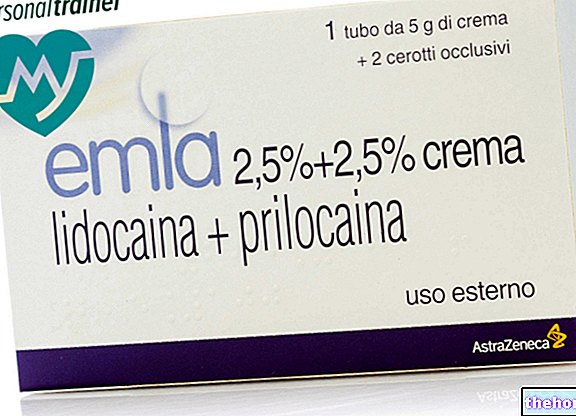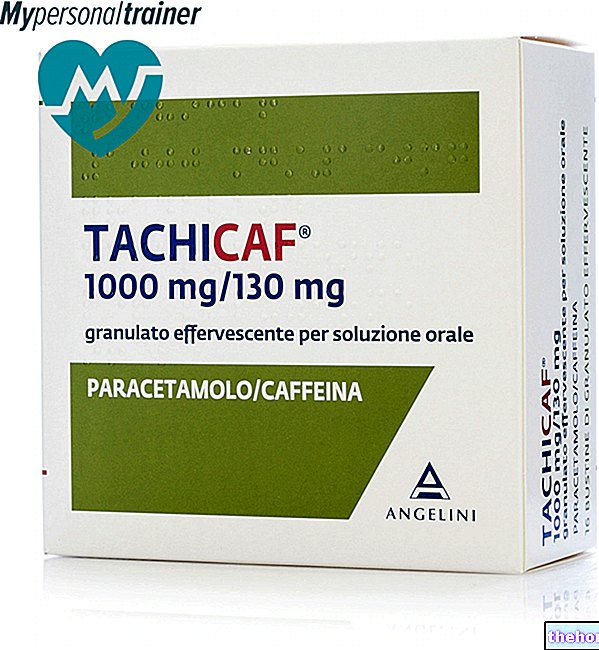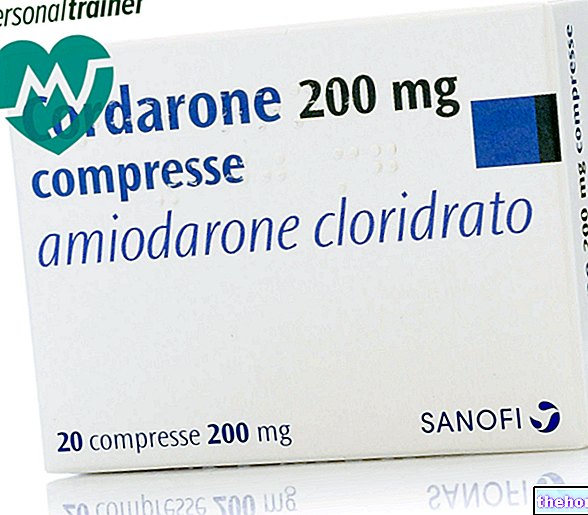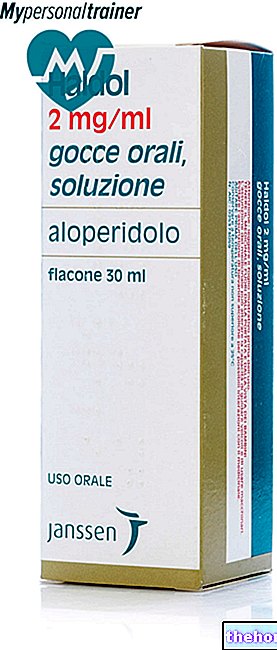Active ingredients: Rociverine
RILATEN 10 mg coated tablets
Why is Rilaten used? What is it for?
PHARMACOTHERAPEUTIC CATEGORY
Rilaten is an antispasmodic preparation containing the active ingredient rociverine capable of releasing the smooth muscle of the viscera by acting both directly on the muscle fiber (direct myolytic activity) and by blocking the excitatory nervous impulses directed to it (parasympatholytic or anticholinergic activity). The manifestation of this activity allows to obtain a resolution of acute painful spasms (colic) or subacute gastrointestinal, biliary and urinary spasms.
THERAPEUTIC INDICATIONS
Spastic-painful manifestations of the urinary, gastrointestinal and biliary tract.
Contraindications When Rilaten should not be used
Glaucoma. Hypertrophy of the prostate. Urinary retention. Pyloric stenosis and other stenosing diseases of the gastrointestinal system. Individual hypersensitivity already known to the product.
Precautions for use What you need to know before taking Rilaten
As with all similar drugs, caution is advised in the treatment of cardiopathic, coronary heart disease, hypertensive and elderly subjects in general (urinary retention). During pregnancy, use only in case of real need and under direct medical supervision. In particularly sensitive subjects, the combined use of anticholinergics and cortisone or tricyclic antidepressants is associated with an increased risk of glaucoma or urinary retention. In these patients it is advisable to use Rilaten with caution and under direct medical supervision.
Interactions What medications or foods may change the effect of Rilaten
see precautions for use.
Warnings It is important to know that:
EFFECTS ON THE ABILITY "TO DRIVE AND ON" THE USE OF MACHINES
As the product can induce vision disturbances, those who drive vehicles or carry out special jobs must be warned of this.
Dose, Method and Time of Administration How to use Rilaten: Posology
Coated tablets: 1 coated tablet 3-4 times a day. In acute cases it is possible to administer 2 coated tablets in a single dose.
Suppositories: 1 suppository 2-3 times a day.
Ampoules: 1 ampoule, intravenously, intramuscularly or by drip, repeatable, if necessary, after an interval of at least 2 hours.
Overdose What to do if you have taken too much Rilaten
see side effects
Side Effects What are the side effects of Rilaten
Especially in particularly sensitive subjects, atropine-like manifestations may occur such as dry mouth, mydriasis (pupil dilation), visual disturbances due to accommodation disturbances, tachycardia, mild drowsiness, constipation, hot flashes, chills. reduce the dosage or, if necessary, stop the treatment Report any undesirable effect not described in the package leaflet to the attending physician or pharmacist.
Expiry and Retention
For the expiry date, refer to the one shown on the package.
Warning: do not use the medicine after the expiry date indicated on the package.
Coated tablets: Store the medicine in a dry place.
Vials: No special storage precautions.
KEEP OUT OF THE REACH AND SIGHT OF CHILDREN
Composition and pharmaceutical form
COMPOSITION
RILATEN 10 mg coated tablets
Each 0.300 g coated tablet contains:
Active ingredient: Rociverine 10 mg
Excipients: Citric acid, precipitated silica, dibasic calcium phosphate, microgranular cellulose, starch, talc, magnesium stearate, gum arabic, cellulose acetophthalate, diethyl phthalate, titanium dioxide, polysorbate 80, sucrose, dye (E 132);
RILATEN 20 mg / 2 ml Solution for Injection:
Each 2 ml vial contains:
Active ingredient: Rociverine 20 mg
Excipients: Monosodium citrate, Esters of p-hydroxybenzoic acid, Sodium hydroxide, Sodium chloride, Water for injections;
RILATEN - suppositories
Each suppository of 1.7 g contains:
Active ingredient: Rociverine 25 mg
Excipients: Semi-synthetic glycerides;
PHARMACEUTICAL FORM AND CONTENT
30 coated tablets of 0.300 g;
6 ampoules of 2 ml;
6 suppositories of 1.7 g;
Source Package Leaflet: AIFA (Italian Medicines Agency). Content published in January 2016. The information present may not be up-to-date.
To have access to the most up-to-date version, it is advisable to access the AIFA (Italian Medicines Agency) website. Disclaimer and useful information.
01.0 NAME OF THE MEDICINAL PRODUCT
RELATEN
02.0 QUALITATIVE AND QUANTITATIVE COMPOSITION
Coated tablets
Each coated tablet contains:
Rociverine 10 mg
Suppositories
Each suppository contains:
Rociverine 25 mg
Vials
Each 2ml vial contains:
Rociverine 20 mg
03.0 PHARMACEUTICAL FORM
Coated tablets
Suppositories
Vials
04.0 CLINICAL INFORMATION
04.1 Therapeutic indications
Spastic-painful manifestations of the urinary, gastrointestinal and biliary tract.
04.2 Posology and method of administration
Coated tablets: 1 coated tablet 3-4 times a day. In acute cases it is possible to administer 2 coated tablets in a single dose.
Suppositories: 1 suppository 2-3 times a day.
Ampoules: 1 ampoule, intravenously, intramuscularly or by drip, repeatable, if necessary, after an interval of at least 2 hours.
04.3 Contraindications
Glaucoma. Hypertrophy of the prostate. Urinary retention. Pyloric stenosis and other stenosing diseases of the gastrointestinal and genitourinary tract. Individual hypersensitivity already known to the drug.
04.4 Special warnings and appropriate precautions for use
As with all similar drugs, caution is advised in the treatment of cardiac patients, coronary patients, hypertensive patients and elderly subjects in general (urinary retention).
04.5 Interactions with other medicinal products and other forms of interaction
Recent drug interaction studies report an increased risk of glaucoma or urinary retention in particularly sensitive patients during administration of anticholinergic drugs associated with corticosteroid or tricyclic antidepressant treatments.
In such conditions it is advisable to use Rilaten with caution and under strict medical supervision.
04.6 Pregnancy and lactation
In the state of pregnancy use only in case of real need and under direct medical supervision.
04.7 Effects on ability to drive and use machines
As the product can induce vision disturbances, those who drive vehicles or carry out special jobs must be warned of this.
04.8 Undesirable effects
Especially in particularly sensitive subjects, atropine-like manifestations may occur such as: dry mouth, mydriasis, accommodation disturbances, tachycardia, mild drowsiness, constipation, hot flashes, chills.
In such cases it is advisable to reduce the dosage, to the limit of suspending the treatment.
04.9 Overdose
See point 4.8
05.0 PHARMACOLOGICAL PROPERTIES
05.1 Pharmacodynamic properties
Experimental studies performed on animals have shown that rociverine has an intense double and balanced antispasmodic action.
In fact, the dynamic activities of rociverine, highlighted by the pharmacological studies carried out, consist of a direct papaverine-like myolytic component, which however is electively expressed at the level of the visceral structures with the exclusion of the vascular ones, and of a parasympatholytic component of the atropinic type. but with reduced incidence of atropine-like side effects.
The balanced ratio of the myotropic and neurotropic components ensures that the antispasmodic effect is achieved with the effective sharing of both components.
05.2 Pharmacokinetic properties
The studies carried out allow us to state that rociverine is a drug that is optimally absorbed for the indicated routes of administration, does not cause accumulation and is mainly excreted by the urinary route.
05.3 Preclinical safety data
The toxicity studies, performed in various animal species (mouse, rat, dog) for different routes of administration, have highlighted the low toxicity of rociverine even for prolonged administration at significantly higher doses than therapeutic ones.
Furthermore, rociverine was found to be devoid of teratogenic effects and did not affect fertility in the animals tested. It has no mutagenic action.
06.0 PHARMACEUTICAL INFORMATION
06.1 Excipients
Coated tablets
Citric acid, precipitated silica, dibasic calcium phosphate, microgranular cellulose, starch, talc, magnesium stearate, gum arabic, cellulose acetophthalate, diethyl phthalate, titanium dioxide, polysorbate 80, sucrose, color (E 132).
Suppositories
Semi-synthetic glycerides
Vials
Monosodium citrate, Esters of p-hydroxybenzoic acid, Sodium hydroxide, Sodium chloride, Water for injections
06.2 Incompatibility
None.
06.3 Period of validity
36 months
06.4 Special precautions for storage
Coated tablets: To be kept in a dry place
Suppositories: To be stored at ordinary temperature (not above 25 ° C)
Vials: No special storage precautions
06.5 Nature of the immediate packaging and contents of the package
Coated tablets
Blisters packed in a lithographed cardboard box.
Box of 30 sugared almonds
Suppositories
Pieces of 6 suppositories packed in a lithographed cardboard box.
Box of 6 suppositories
Vials
Neutral, amber glass vials, packed in a lithographed cardboard box.
Box of 6 ampoules of 20 mg in ml 2
06.6 Instructions for use and handling
---
07.0 MARKETING AUTHORIZATION HOLDER
Laboratori Guidotti S.p.A. - Via Livornese 897 - PISA - La Vettola
08.0 MARKETING AUTHORIZATION NUMBER
Coated tablets: 023598016
Vials: 023598030
Suppositories: 023598042
09.0 DATE OF FIRST AUTHORIZATION OR RENEWAL OF THE AUTHORIZATION
June 1978 / May 2005
10.0 DATE OF REVISION OF THE TEXT
September 2008























-nelle-carni-di-maiale.jpg)




